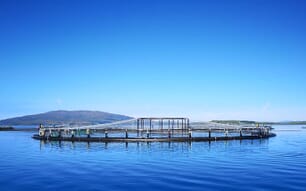While the marine conservation organisation does see the drop in antibiotics – as shown in Sernapesca’s “2016 Report on Antimicrobial use in National Salmon Farming” – as a positive it flags up the fact that, in order to produce 727,812 tonnes of salmon, Chile used 382,500 kilos of antibiotics. Meanwhile, Oceana observes, Norway used 523 kilos to produce twice the amount of salmon.
“In spite of reducing the use of antibiotics, the salmon industry’s levels are still disturbing,” warned Oceana’s Executive Director Liesbeth van der Meer. “Norway seems to have found the right formula and barely uses them in their production. In fact, today less than 1% of salmon produced in that country is treated with antibiotics, which demonstrates that antibiotic-free salmon can be produced by making an effort.”
“This is a breaking point for the antibiotic consumption rate, which had been steadily rising these past five years. However, it is urgent to gain further transparency on how the salmon farming industry works. This is the only way to establish regulations that will prevent sanitation crises, regulate density and create measures for disease control,” added van der Meer.


